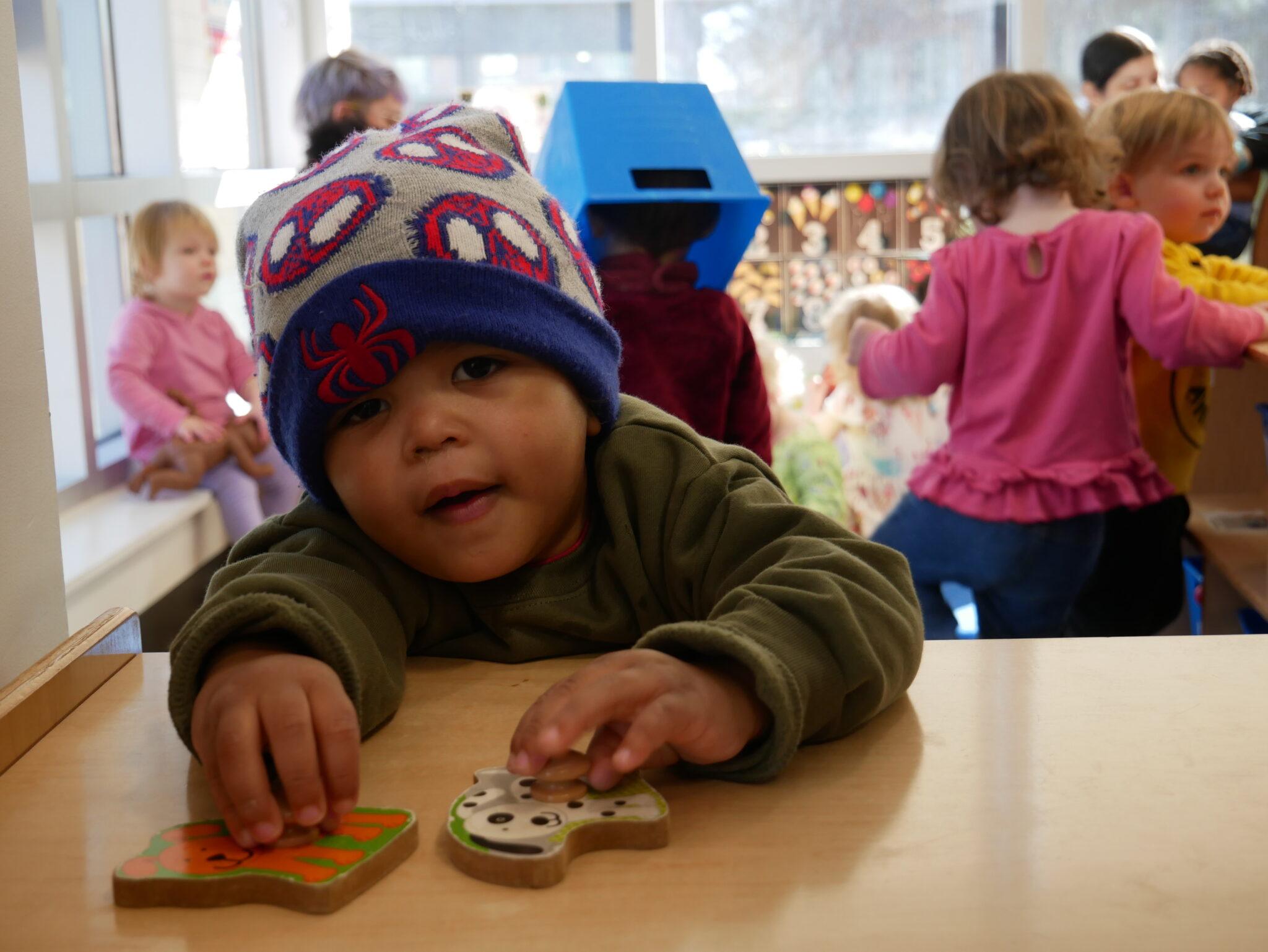This article originally appeared at EdNC.org.
Since February 2020, the number of licensed child care programs in North Carolina has decreased by 5.3%, and the loss has accelerated in the past year.
EdNC has been tracking changes in the number of programs over the past year as pandemic-era stabilization funding has expired. Quarterly data provided by the NC Child Care Resource and Referral Council (CCR&R) in partnership with the NC Division of Child Development and Early Education (DCDEE) revealed that 40% of the net loss in licensed child care programs since the pandemic began occurred in just the past year.
In other words, the pace of closures has doubled — from an average net loss of four programs per month from February 2020 through June 2023, to an average net loss of nine programs per month from July 2024 through June 2023— as stabilization grants have diminished.
An extension of those grants was set to expire on June 30, creating a “funding cliff” that was expected to prompt as many as one-third of programs to close their doors. But in the final week of June, the General Assembly committed $67.5 million to extend compensation grants, at a reduced amount, to child care providers.
Kandice Scarberry, a spokesperson for the Department of Health and Human Services (which oversees DCDEE), said this amount is “insufficient to fully cover the first two quarters of the fiscal year,” which began July 1.
Rather than falling off a funding cliff, North Carolina’s licensed child care system is now rolling down a steep hill toward the end of 2024.
Trends in the data
Of the state’s 100 counties, 62 have had a net loss of licensed child care programs since February 2020, while 19 have remained stable and 19 have experienced a net gain.
All of the state’s urban counties have had decreases in the number of their child care programs since February 2020. And all of the counties that have seen a net increase or have held steady are designated as rural or suburban by the NC Rural Center.
But it’s too simplistic to say that rural and suburban counties are faring better than urban ones. While the net gain or loss of programs can be a helpful way to think about overall trends, it’s never the full story of what families are experiencing in their communities.
For example, in two rural counties — Hyde and Polk — there are no licensed child care programs serving infants or toddlers.
Families in those counties do not have the freedom to choose which early childhood education option is the best for their children: forgoing work to provide care and education themselves; trusting a friend, family member, or neighbor with the care and education of their infants and toddlers; or enrolling their children at a licensed child care center or family child care home.
The vast majority of human brain development occurs in the first three years of life. Decades of research shows that strengthening neural connections during this critical period leads to improved health, lower incarceration rates, better educational outcomes, and greater workforce readiness.
Economists say the lack of public investment in early childhood care and education results in a gap between what parents can afford to pay in the early stages of their careers, and what it costs to provide high-quality care and education. The market is kept afloat by high tuition and low teacher wages.
Family child care homes disproportionately affected
While the state has had a net loss of 5.3% of licensed programs since February 2020, the net decrease in student enrollment is 2.2%. The likely explanation for that gap: Of the 280 net programs lost since February 2020, the vast majority (238, or 85%) have been family child care homes.
“I don’t find it surprising, as a former home-based child care provider,” said Laterria Lassiter, who now works as a program manager on a home-based child care initiative at MDC, a nonprofit research organization based in Durham.
Lassiter closed her program when operating a licensed child care site from her home was no longer financially or logistically viable.
Family child care homes (FCCHs) are licensed programs in a home-based setting serving small groups of children. They represent 23% of programs in the state and 2.5% of enrollment in licensed child care.
While FCCHs serve a small proportion of NC’s youngest students, they’re an important element of the overall early care and education system.
A 2022 report on home-based child care in North Carolina explained that parents choose this form of early childhood education “especially for infants and toddlers, because it is often close to home, affordable, flexible, and can foster a child care environment that shares the family’s cultural norms and values.”
Five counties have lost all of their FCCHs since February 2020. These counties are rural and each went from having a single FCCH to none: Alexander, Davie, Macon, Madison, and Montgomery.
“In a state like North Carolina, where so much of our state is rural, [FCCHs] are a critical piece of our infrastructure, because center-based care is not practical for many families who live in communities that are less densely populated,” said Susan Nobblitt, the program manager for MDC’s home-based child care community of practice.
For Courtney Alexander, who works alongside Lassiter and Nobblitt as MDC’s program director for educational equity, there’s little question about why home-based providers are leaving: low wages and lack of benefits.
“What I’ve heard as an argument is, I can go work at Wendy’s and be paid $18 an hour, and I don’t have to work late, and I don’t have to not be able to feed my kids,” Alexander said. “They would leave the profession and say, yes, I love the profession, but I can’t make it work for my household.”
Shifts among subgroups
In past analyses, EdNC has taken a closer look at three subgroups of counties — the two counties with high Indigenous populations, the eight counties in the northeastern corner of the state in which more than half of the population identifies as Black or mixed race, and the 18 counties in the southwestern corner of the state that make up the focus area of the Dogwood Health Trust.
The latest data reveal the counties with high Indigenous populations (Robeson and Swain) have experienced a 5% net gain in the number of licensed programs since February 2020. But this percentage increase is actually lower than when we conducted our first analysis of the data from the third quarter of 2023, when that increase was 7% since February 2020.
The majority-Black counties (Bertie, Edgecombe, Halifax, Hertford, Northampton, Vance, Warren, and Washington) have collectively seen a 1.5% net gain in the number of licensed programs since February 2020. But again, this is a smaller gain than when we started tracking changes (2.5% as of Q3 2023).
The Dogwood counties (Avery, Buncombe, Burke, Cherokee, Clay, Graham, Haywood, Henderson, Jackson, Macon, Madison, McDowell, Mitchell, Polk, Rutherford, Swain, Transylvania, and Yancey) have seen a 2% net loss in the number of licensed programs since February 2020. When EdNC started monitoring these data, the Dogwood counties had almost a 1% net gain, so this represents a clear trend reversal over the last year.
These are all small numbers for small groups of counties with small percentage changes in the number of licensed child care programs, so it’s hard to draw clear conclusions.
But it’s worth noting that even in subgroups of counties that previously had net gains, those gains appear to be shrinking or have turned to losses during the year when stabilization funds have started drying up.
EdNC will continue to monitor changes in the number of licensed child care programs as the latest extension of stabilization funds dwindles through the remainder of the year. You can read recent reports on Q3 of 2023 here, Q4 of 2023 here, and Q1 of 2024 here.

Katie Dukes
Katie Dukes is the director of early childhood policy at EdNC.



